You might have heard about the buzz of Mutual Funds (MF) and how they’re gaining in popularity. In fact, Livemint, an Indian financial daily newspaper, reported that MFs garnered more than ₹7000 crore via SIPs in the month of July, alone, which is a 53% surge compared to the same period last year.
Before taking a look at what exactly mutual funds are, let’s have a peek at the power of compounding.
“Compound interest is the eighth wonder of the world”
– Albert Einstein
MFs utilise the power of compounding. Investing early is as important as investing wisely and hence, to take advantage of compounding, it is wise to start investing early.
Compounding allows you to earn interest on your principal and your returns. If you remain invested between the age of 24 to 34, you would end up with a higher corpus than someone who initiates the investment at age 30 and continues till 60.
Consider the scenario where investors of different age groups are targeting ₹ 1 Crore by the age of 60, assuming the rate of interest as 10% and the rate of inflation as 5%.
| 20-year old | 35-year old | 45-year old |
|---|---|---|
 |
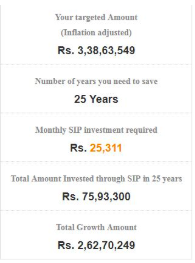 |
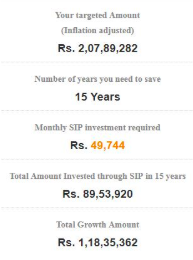 |
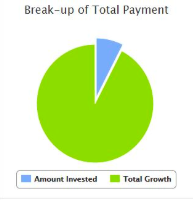 |
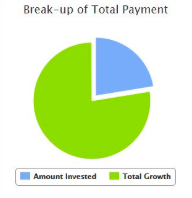 |
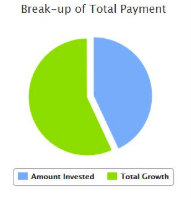 |
As illustrated in the example above, compounding can take small investments to higher levels.
What is a Mutual Fund?
Firstly, let’s take a look at what are stocks and bonds.
The above methods represent two different ways for a body to raise money. When a company issues stock, it is selling a piece of itself in exchange for cash. When a company issues a bond, it is issuing debt with the agreement to pay interest for the use of the money.
A mutual fund is a managed portfolio of stocks or bonds.
An MF can be thought of as a company that brings together a large group of people and invests their money on their behalf in a portfolio. It is managed collectively by a professional portfolio manager to make the decisions as to where to invest the money in the fund and when to buy and sell the investments to earn the highest possible returns. Each investor owns shares of the mutual fund, which represent a portion of its holdings.
Unlike investing in shares of stock, mutual fund shares do not give its holders any voting rights. A share of a mutual fund represents investments in many different stocks or securities instead of just one holding.
The Gains
“The biggest advantage of mutual funds is that the common consumer needn’t be burdened with the task of picking stocks. They make investing easy.”
Risk Diversification
A mutual fund holds a variety of investments which can make it easier for investors to spread the risk. Not all investments perform well at the same time. When one investment underperforms, the loss can be compensated by taking advantage of the earning potential of the others. Thus, holding a variety of investments may help offset the impact of poor performers.
Easy to invest, liquid
Buying mutual funds are pretty straightforward. They are available through banks, brokerage firms, which sometimes have their own line of in-house mutual funds, and the minimum investment is often small.
You can enter at a lower level with a small amount. Even if there are market fluctuations, systematic investments would ensure that you get more units, in turn giving higher returns in the future.
You can sell your shares at almost any time if you need to get access to your money.
However, one point to note is that mutual funds are priced once a day, at the end of the day. Unlike stocks, where prices are moved by the supply and demand of the shares, fund prices are determined by the value of the underlying securities in the fund and hence many mutual funds can be redeemed only at the end of the trading day.
The Tax
When compared to fixed deposits, the taxation structure of mutual funds is different.

The longer you hold onto your mutual fund units, the more tax-efficient they become as the tax on long-term gains is much lesser than the tax on short-term gains. And thus, a three-year investment in a short-term fund will leave you with almost twice the returns as an FD over the same period along with excellent liquidity.
The Systematic Investment Plan (SIP)
If you do not wish to make a one-time investment, you can always opt for the smaller SIPs which start as low as ₹ 500. SIPs use the concept of rupee cost averaging which essentially ensures that you buy more shares of an investment when prices are low and less when they are high. But since you do not know how high or low the market will go on to be, you continue to invest a predefined amount of money periodically so as to reduce the cost of acquisition of a unit over a period of time.
How can I invest?
Mutual funds can be purchased through a broker, banks, insurance agents, financial planners or straight from the fund company. Many no-load funds can be purchased directly.
(A no-load fund is a mutual fund in which shares are sold without a commission.)
Mutual fund transactions can be executed online, too. This makes it easy to compare and make an informed decision along with saving time and effort. There are many platforms which help you with the same.
And as always, there are agents who would do the work for you in return for a commission.
The Losses
Some disadvantages of investing in mutual funds include the variety of fees involved, the lack of transparency and the inability of management of the portfolio to guarantee significant returns.
One is required to pay sales charges and other expenses regardless of how the fund performs.
And one doesn’t have any influence or control over specific investment decisions made by the portfolio manager.


Comments are closed.